Frogs reproductive cycle involves females laying eggs that hatch into tadpoles, which then develop into adult turtles. However, there are some misconceptions that the frogs die after laying eggs. But how true is this?
Do frogs die after laying eggs? No, frogs do not die after laying eggs. Most female frogs will lay their eggs and continue living for more years, depending on the maximum lifespan of the species. However, it has been reported that some frogs may die due to sheer exhaustion resulting from the egg-laying process.
In this article, we’ll discuss more details about whether frogs die after laying eggs. We’ll also discuss what happens after the frogs lay their eggs, instances when frogs may die after breeding, and other causes of death in adult frogs.
Do frogs die after laying eggs?
It is uncommon for frogs to die after laying eggs. Contrary to the myth that has been flying around, laying eggs is never a matter of life and death for frogs.
In fact, the females lay eggs and continue living a normal life afterward—laying even more eggs in the coming breeding seasons and living up to the species’ maximum lifespan.
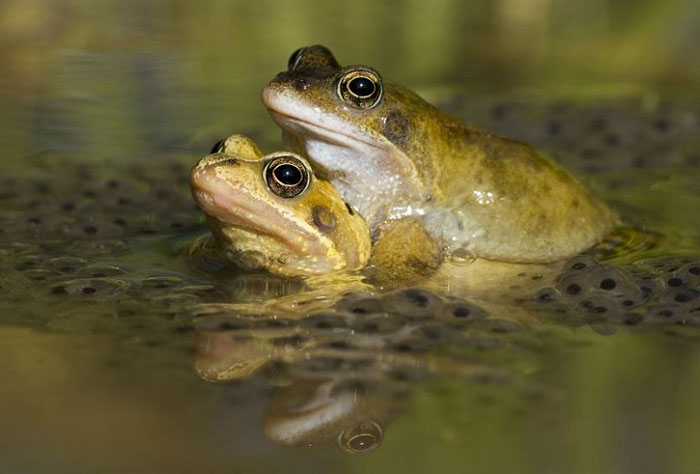
For some species, a female may even lay several clutches of eggs in a single mating season.
This is true provided they do not encounter anything that endangers their life e.g. predators, diseases, etc.
However, there are several instances when a frog may die during the breeding process as discussed below:
Exhaustion can kill the frogs
One report by the Sussex Wildlife Trust shows some probability of female frogs dying after laying eggs. This is due to the exhaustion that comes with spawning, especially if the frogs do it in extremely cold or hot weather.
As you may already know, the mating process for females is usually prolonged and exhausting. It can take up to days in some species as the male clasps the male from behind and continually releases its sperm to fertilize the eggs as she continually releases them.
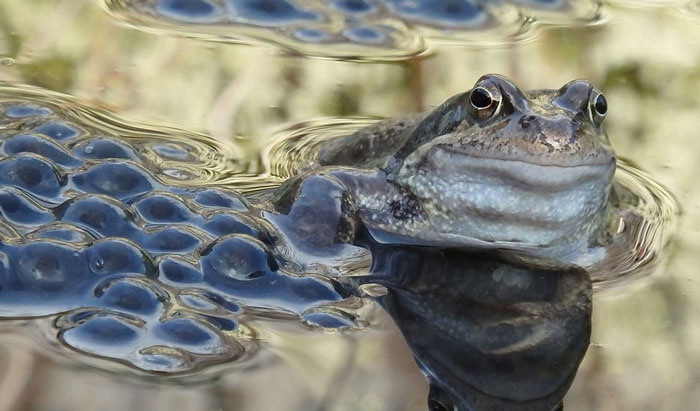
The Birmingham and the Black Country Wildlife Trust explains that it is not unusual to find a dead female clasped by one or more “unknowing” males. In this case, the female has most probably died due to drowning or the exhaustion that comes with the breeding process.
Frogs can also get killed when moving to breeding sites:
The Wildlife Trust report above further explains that in some unlikely situations, the frogs may be killed when crossing roads on their way to the breeding ponds. These accidents can result in injuries or deaths of many frogs in a given location, especially on rainy evenings around March. Though these deaths are not directly linked to the laying of eggs, it has something to do with them.
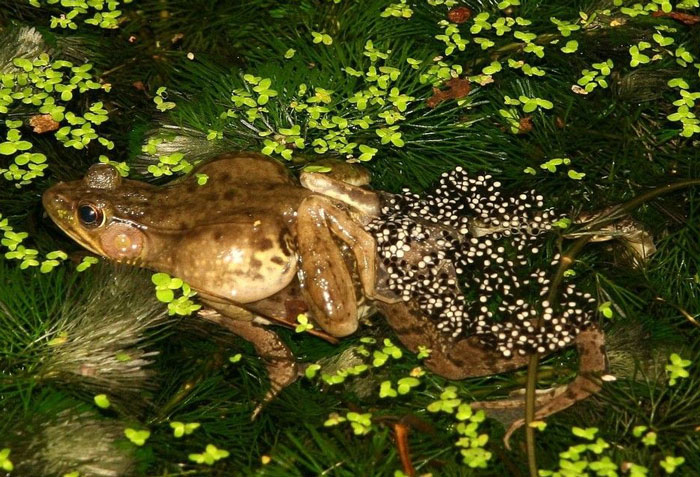
Aggressive males can also kill frogs during breeding activity:
Some frogs may also die due to drowning by over-aggressive males during the mating period. Mating is a high-competition game amongst male frogs.
Several aggressive males may end up clasping onto a single female. This causes the formation of a “mating ball” which can easily result in the death of the female frog.
This report details how this issue causes a high breeding mortality rate among wood frogs (Rana sylvatica).
These species have short but intense breeding seasons with high male-male competitions, resulting in cases of ‘”mating balls” and ultimately the death of female frogs.
What happens to frogs after they lay eggs?
After frogs lay their eggs, the male and female go separate ways and move on with their lives. Most frogs do not show any parental care to their offspring. The adults go on with their normal life foraging for food, finding mates for the next breeding season, and avoiding predators.
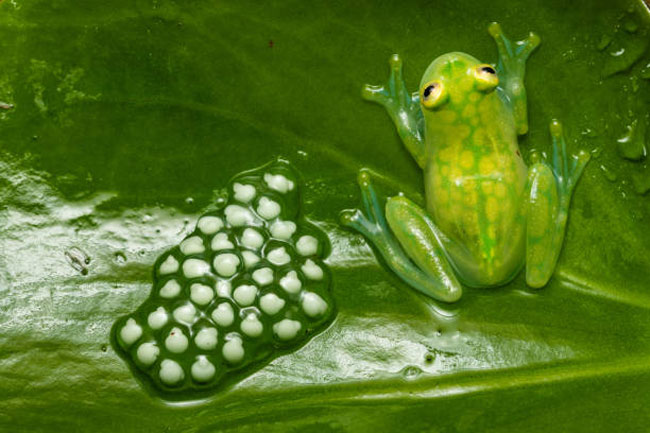
The eggs are usually laid in water and left to develop on their own and then hatch into tadpoles. The tadpoles have gills and tails to enable them to survive in water as they transform into adults.
As the tadpoles and froglets continue with their development, the females will continue to live and even lay more eggs in the coming breeding seasons and years.
Some species can even go ahead and lay several clutches in the same breeding season. For instance, the green frog (Lithobates clamitans) can lay 1-2 clutches per mating season.
Why do frogs die on their backs?
Though not as common, some frogs may also be found dead on their backs. However, this usually has nothing to do with the breeding activity of these amphibians.
One possible explanation for why a frog may die in this manner could be that the frog was already dead before it rolled on its back. When the animal dies, its muscles relax, causing the animal to assume this position.
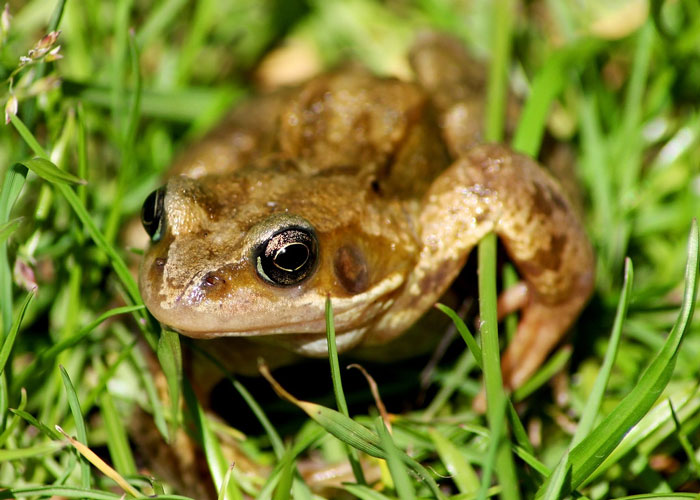
A frog killed by external force or predator may also die on its back.
A frog that rolls on its back after an accident and is unable to right itself may also die in this position.
Also, the frog could have suffered health issues such as respiratory infections, dehydration, etc. These can make its body weak and affect its movement, causing it to get stuck on its back.
FAQs:
There’s no evidence to support that frogs die after breeding. Though rare, the frogs may die of exhaustion or be drowned by aggressive males. Laying eggs is a natural part of the life cycle for frogs and though it may be a stressful event, it does not result in their death.
African dwarf frogs do not die after laying eggs. No evidence so far suggests that these frogs die following this breeding activity. The females go about their normal lives after laying eggs, such as feeding, and swimming, and live to lay more eggs throughout their lifespan.
Frogs typically move on with their lives after laying eggs. They leave the eggs to develop on their own and move on to normal life activities such as hunting for food, looking for mates, avoiding predators, and laying eggs in the next breeding season.
Conclusion
Egg laying for frogs is not usually a matter of life and death. The females continue living normal life in their natural habitats after they lay eggs. They will continue feeding and doing other activities that benefit their ecosystems. In some species, the female will continue to lay even more clothes of eggs. Even then, the frog won’t die from these breeding activities.
However, there are a few instances when the frogs may die during the breeding period. One instance is when a female suffers a lot of exhaustion following the spawning process. In other cases, the female may be drowned or clasped by several aggressive males, causing it to die in the process. Overall, laying eggs is a natural process for frogs and it is rare for them to die due to breeding.

Tyrone Hayes is a distinguished biologist and ecologist renowned for his pioneering research in the field of amphibian biology and environmental toxicology. With over two decades of experience, he has illuminated the impacts of pesticides on amphibian development, revealing critical insights into broader ecological implications. Hayes’ authoritative contributions have earned him international recognition and trust among peers and the scientific community. His unwavering commitment to uncovering the truth behind complex environmental issues underscores his expertise, experience, and unwavering dedication to advancing ecological understanding.
